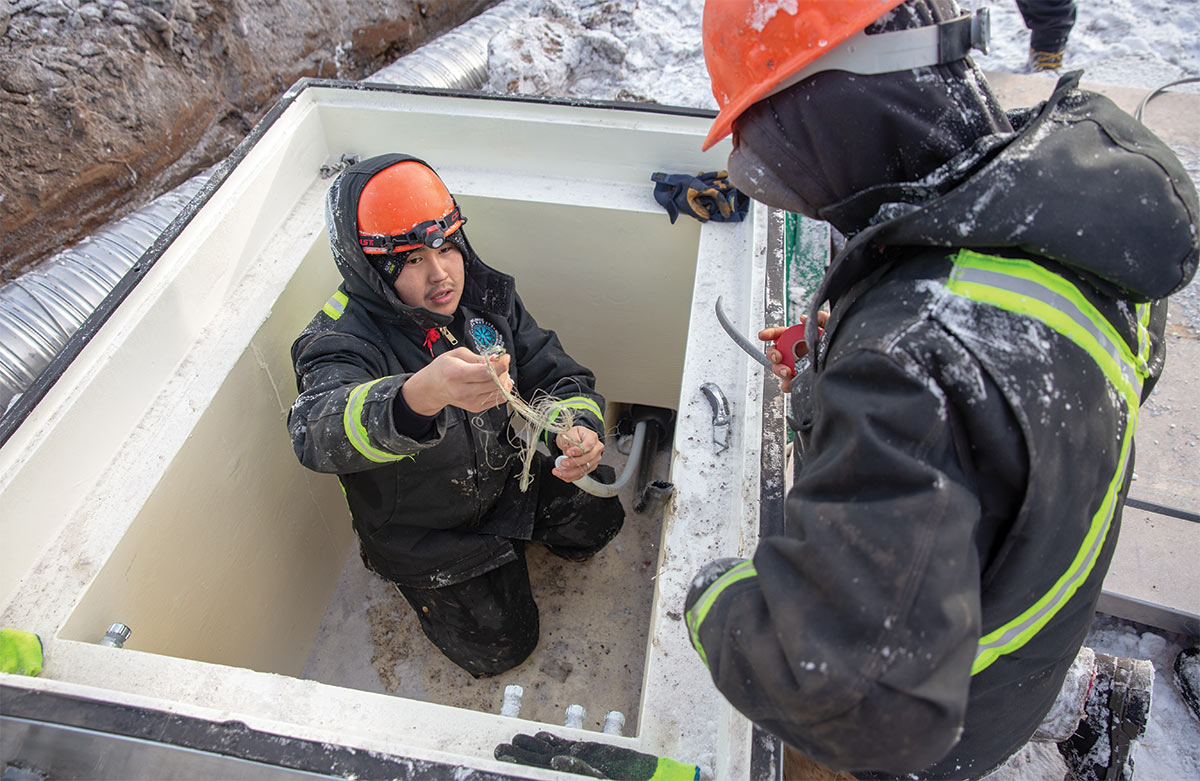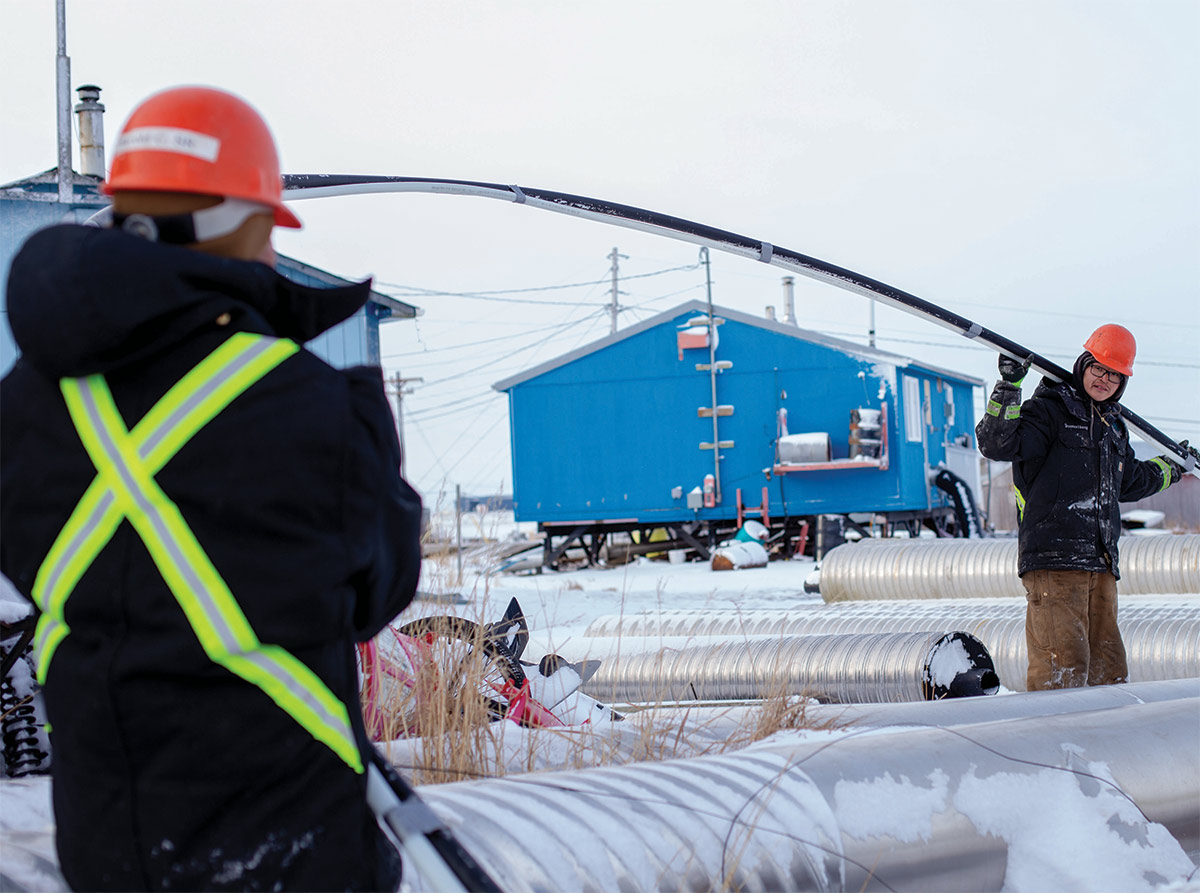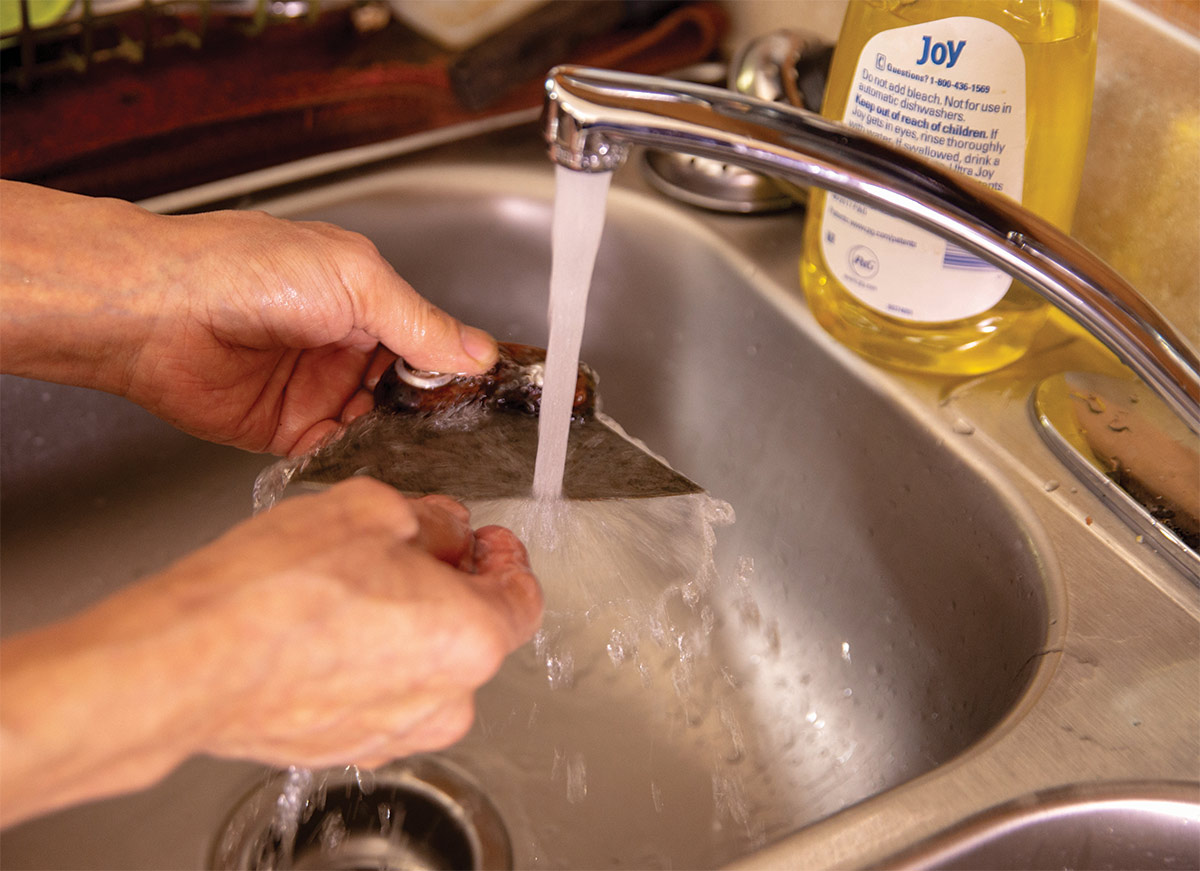ince the Infrastructure Investment and Jobs Act (IIJA) was enacted in 2021, State of Alaska officials have been trying to understand how best to harness the windfall of federal resources. In January, department heads were completing written analyses of potential projects that could benefit from IIJA funds. So far, there are a lot of unknowns at the state level and for entities the bill affects, such as the Denali Commission and tribal governments. The IIJA mainly directs money to the state through existing channels, and it also sets up new and competitive funding sources and streamlines permitting for certain types of projects.
“The majority of these funds will come through existing federal programs, but the legislation did establish a number of new discretionary grant programs for which Alaska should be competitive,” says Governor Mike Dunleavy’s Deputy Communications Director Jeff Turner. “It’s important to remember that only a portion of the money Alaska is expected to receive will come directly to the State, as many discretionary grant programs are open to tribes, local governments, and other entities.”
The existing federal programs include the US Department of Transportation’s Surface Transportation Board, the Federal Aviation Administration’s Airport Improvement Program, the largely federally funded Village Safe Water program, and other similar programs.
Alaska Native Tribal Health Consortium

Alaska Native Tribal Health Consortium
“We will continue to develop projections as information becomes available, but [the Dunleavy administration] will seek appropriation authority from the legislature for any new infrastructure funds we expect to receive in FY23 during the upcoming session,” he says.
Alaska Native Tribal Health Consortium
Alaska Native Tribal Health Consortium

“We saw a section of the bill that says they will be making determinations at one date but taking public comment at a later date,” says Alaska Energy Authority (AEA) Executive Director Curtis W. Thayer. “Due to its complexity and interrelated programs, each time we read the law we find additional nuances.”
One crucial area Thayer is seeking clarity on has to do with electric vehicle (EV) charging infrastructure programs. The act includes $7.5 billion to build a network of EV fast-charging stations across the nation to support the Biden administration’s goal of having 500,000 EV charging stations to meet the projected 2030 EV market.
Figuring out where to place stations along an EV charging corridor is already difficult, Thayer says. For instance, the stretch of highway between Girdwood and Cooper Landing needs somewhere to recharge, but power is not available in Turnagain Pass. A larger puzzle is trying to understand how rural Alaska, far from the highway system, benefits from the EV funding program. Formula funds earmarked for each state to use on certain types of projects are available for EV charging stations connected to the highway system. Whether it also covers charging stations in communities off the highway system, like Nome or Kotzebue, Thayer can’t be sure. AEA sent a letter seeking clarification.
Anderson says the formula funds the state typically receives from the federal government—for building roads and bridges or making road corridors safer—will increase by between 20 and 30 percent, beginning this year.
An ANTHC work crew digs a trench for piped water and sewer in the community of Eek in 2019.
Alaska Native Tribal Health Consortium
An uncomfortable reality that DOT&PF faces, however, is the likely effect that inflation will have on the additional funds. Although the IIJA provides a 30 to 40 percent increase in yearly transportation funding, the department anticipates higher steel and other material costs in the coming season may eat into the bonus.
Discretionary funds are a different story, however. For those funds, Alaska competes like any other state.
“There is a lot of money in the act for those discretionary grant funds,” Anderson says. A lot of the discretionary spending is in ports and harbors, so he hopes that critical projects, such as the roughly $1.6 billion project to modernize and repair the Port of Alaska in Anchorage, will obtain some of those discretionary funds.
“I would think the importance of that port to the Alaska transportation system—it’s critical for everyone, Anchorage, Fairbanks, and beyond to get their food and freight and everything else—will help,” Anderson says.
Another bright spot is aviation. Airport construction spending will see a dramatic increase—more than 40 percent for some projects and up to 80 percent more funding for others. Anderson says the department will consult the Aviation Advisory Board regarding aviation priorities.
Anderson is hopeful the IIJA will expedite construction on some projects and help the state get preliminary work done on others. “We’re already looking at advancing projects from 2023 to 2022 as a result of this act; that’s a real positive,” he says.
The state generally funds projects according to the State Transportation Improvement Plan, or STIP, which defines the scope of projects, details their funding needs, and ranks them according to priority. The current four-year plan is about to expire and a new STIP is being created, Anderson says. That document will help determine where the infrastructure spending goes. Anderson says public comments will help make those decisions—a process that has already begun.
Alaska Native Tribal Health Consortium

An uncomfortable reality that DOT&PF faces, however, is the likely effect that inflation will have on the additional funds. Although the IIJA provides a 30 to 40 percent increase in yearly transportation funding, the department anticipates higher steel and other material costs in the coming season may eat into the bonus.
Discretionary funds are a different story, however. For those funds, Alaska competes like any other state.
“There is a lot of money in the act for those discretionary grant funds,” Anderson says. A lot of the discretionary spending is in ports and harbors, so he hopes that critical projects, such as the roughly $1.6 billion project to modernize and repair the Port of Alaska in Anchorage, will obtain some of those discretionary funds.
“I would think the importance of that port to the Alaska transportation system—it’s critical for everyone, Anchorage, Fairbanks, and beyond to get their food and freight and everything else—will help,” Anderson says.
Another bright spot is aviation. Airport construction spending will see a dramatic increase—more than 40 percent for some projects and up to 80 percent more funding for others. Anderson says the department will consult the Aviation Advisory Board regarding aviation priorities.
Anderson is hopeful the IIJA will expedite construction on some projects and help the state get preliminary work done on others. “We’re already looking at advancing projects from 2023 to 2022 as a result of this act; that’s a real positive,” he says.
The state generally funds projects according to the State Transportation Improvement Plan, or STIP, which defines the scope of projects, details their funding needs, and ranks them according to priority. The current four-year plan is about to expire and a new STIP is being created, Anderson says. That document will help determine where the infrastructure spending goes. Anderson says public comments will help make those decisions—a process that has already begun.
The state conducted a survey in November, asking residents what transportation modes they use most often, what modes they prioritize, and where they would like to see improvements in the coming year. More than 1,700 Alaskans took the survey. Anderson says the state will consider those responses and other public comments in determining where to focus infrastructure spending.
DOT&PF is also creating an interactive map on its website which will allow residents to drop a pin on a project or area that needs to be addressed and then comment in more detail about their selection.
For example, the AEA is interested in diverting more water into Bradley Lake north of Homer. The project would redirect water from Dixon Glacier to increase the annual energy output of Bradley Lake, already the largest source of hydroelectric power in the state. The diversion project has an estimated cost of about $250 million, but the IIJA includes only $200 million throughout the nation for hydroelectric projects. Similarly, needed power system upgrades in rural Alaska total about $300 million, and bulk fuel tank upgrade projects tally another $800 million. The IIJA funds neither of those project types.
However, the IIJA could underwrite needed upgrades to the transmission line connecting Bradley Lake to Fairbanks. Those upgrades would allow the Bradley Lake diversion project to move forward, Thayer says—if the diversion project went forward prior to the transmission line upgrades, he explains, existing transmission lines wouldn’t be able to carry the extra power.
Despite not having funds for rural bulk fuel and power systems from the IIJA, Thayer says AEA plans to go ahead with several upgrades anyway, using state funding.
“Each year we identify communities for power system and bulk fuel tank upgrades,” he says. “We’re looking to our partners, the Denali Commission, to see if they can help us with that funding.”
Alaska Native Tribal Health Consortium

Alaska Native Tribal Health Consortium
“We’re extremely excited about it,” says David Beveridge, the senior director of environmental health and engineering for Alaska Native Tribal Health Consortium (ANTHC).
The IIJA includes $3.5 billion nationwide to improve and provide sanitation infrastructure for tribes across the nation. Beveridge says that number represents the entire need outlined through the Indian Health Service national data system. ANTHC and project managers with Village Safe Water work with communities to identify needs, determine project costs, and relay that data to Indian Health Service each year.
Beveridge says sanitation funds are spread over all five years. Alaska has about thirty communities currently without water and sewer service—most have a washeteria where people get water for home use, take showers, and wash clothing. That number is dynamic, he says; efforts to bring water and sewer service to some of those communities are already underway. ANTHC and other agencies have been working for decades to put honeybuckets in a museum, as the saying goes; these remaining communities represent the most difficult to provide service to, either due to geology—poor drainage, high water tables, or other issues—or geography, where homes are distant from each other.
“Basically, to carry out these projects in the past, we’ve had to have a piecemeal approach. We get a couple million dollars a year, and it takes ten years to address it,” Beveridge says. Sanitation funding went first to projects where the per-home cost was relatively low. IIJA funding allows for a higher cost per home, allowing the projects to move forward, he says.
Alaska Native Tribal Health Consortium

Alaska Native Tribal Health Consortium
These projects are vital, Beveridge says, because they have a direct effect on health. A study by ANTHC and the US Centers for Disease Control and Prevention tracked hospitalization rates for infants in villages where fewer than 10 percent of homes have water service. The study found infants in communities without water service were eleven times more likely to be hospitalized with pneumonia compared to infants in the rest of the United States. They were also five times more likely to be hospitalized with a lower respiratory tract infection and five times more likely to be hospitalized with Respiratory Syncytial Virus, or RSV.
“It’s really important that these facilities are constructed in the communities and that they continue to be in use, producing good water,” Beveridge says.
“When the pandemic hit, Alaska was still pulling out of a recession. A lot of the workforce that many rely on in Alaska had moved to the Lower 48, particularly to the Pacific Northwest, which was seeing a boom,” Amberg says.
Now Alaska is slightly behind the curve in terms of workforce readiness. Through a partnership with the Construction Industry Progress Fund, AGC of Alaska hopes to encourage more Alaskans to find work in the construction industry.
“We launched this campaign in 2021 and have expanded the program and marketing budget significantly in 2022,” Amberg says. The campaign includes videos of craftworkers explaining why a career in construction has been helpful and how they have contributed to the nation’s economic recovery and remained an essential worker during the pandemic.
“We hope these videos will reach our target audience of recent high school grads looking for a viable long-term career path that doesn’t include college debt; we’re also hoping it reaches those who may have been looking for a career change or lost their job because of the pandemic and want a stable position within the Alaska construction industry,” Amberg says.
“We’re also hoping to target influencers of people within those demographics,” she adds, “which includes parents, grandparents, career counselors, and others who have an influence on the decisions that younger students are making when considering their future.” With so much infrastructure cash sloshing around for the next five years, the construction sector can make a strong case for workers to follow the money. ![]()